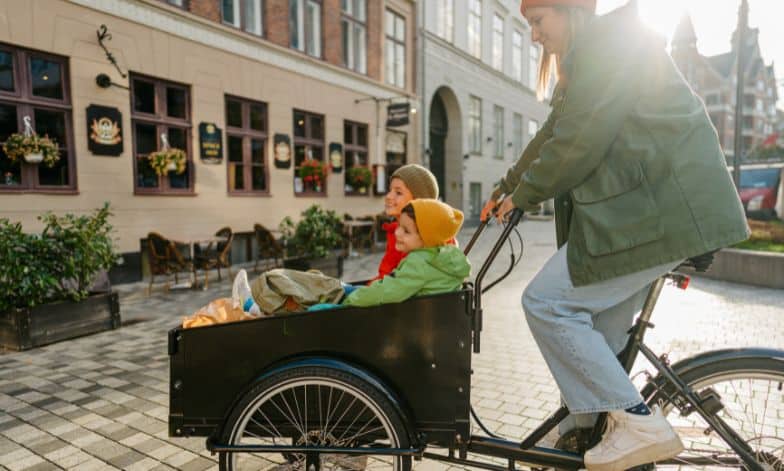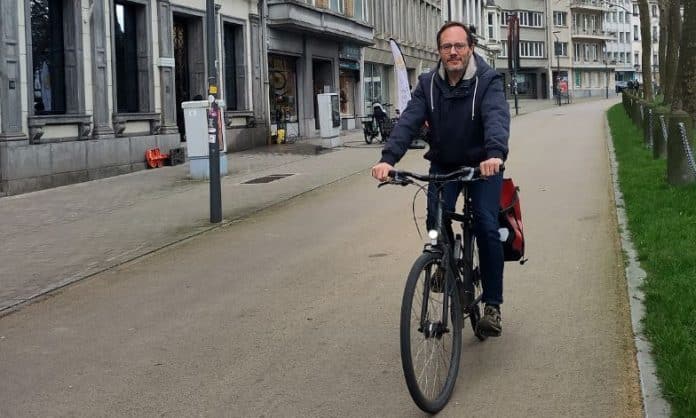With its health and environmental benefits, cycling faces a notable gender disparity. Statistics indicate a significant underrepresentation of women cyclists worldwide, with three to four times more men cycling on roads. This gap stems from safety concerns, inadequate infrastructure, societal expectations, and women’s diverse responsibilities. UNRIC discussed these challenges and trends for enhancing the safety and inclusivity of cycling for women with Philip Amaral*, Director of Policy and Development at the European Cyclists’ Federation (ECF).
How do cultural attitudes towards women in cycling vary across different European countries?
Philip Amaral (European Cyclists’ Federation, ECF): While there’s limited research on this subject, studies on transportation habits indicate that traditionally, activities like driving or cycling are more associated with men. The historical development of road infrastructure, especially since World War Two, often designed with a male-dominated workforce in mind, has influenced commuting patterns. Cycling tends to be perceived as a predominantly male activity, especially in sports, though women’s participation in sports cycling has seen progress in recent years. Data collected by Strava (focuses mainly on sports cycling) reveals significant gender gaps, with women spending less time cycling than men in various countries: Spain (64% less), France (54% less), the United Kingdom (54% less), Germany (42% less), Japan (66% less), United States (45% less), and Brazil (37% less). These trends seem to remain the same in daily mobility cycling. Studies indicate that higher gender inequality in urban societies reduces women’s access to private cars, making them more dependent on alternative modes like walking or public transport. Women’s sensitivity to traffic risks and fears of sexual harassment contributes to lower cycling rates, emphasising the need for inclusive cycling infrastructure and supportive cultural shifts. Good road networks are essential for caregivers or people with family responsibilities who need to go to many places. This has disproportionately fallen on women over the years. The availability of cargo bikes presents an opportunity to address these challenges, particularly for women with family responsibilities, but their adoption depends on accommodating infrastructure.
What barriers prevent more women from cycling?
Beyond the crucial aspects of infrastructure and safety, additional barriers contribute to the lower participation of women in cycling. Data from 2023 collected by Strava reveals that women feel less comfortable cycling if fewer female cyclists are around. Factors like the time of day also play a role, with women being less likely to ride during pre-sunrise or post-sunset hours. Disproportionate household and childcare responsibilities contribute to women having less active time on a weekly and weekend basis than men. The quality of cycling infrastructure plays an important role, including well-lit paths, smooth surfaces, and separation from other modes of transport. Additionally, a perceived sensitivity to road traffic risks among women further affects their cycling habits. The presence of cars and trucks on roadways is a significant deterrent, with data from the COVID lockdowns in 2020 showing a 50% increase in women cycling in the UK and similar trends in New York City when streets were quieter and less crowded with car traffic.

How can safety measures be enhanced to encourage more women to take up cycling?
Several measures can be implemented to enhance safety and encourage more women to take up cycling. Political leadership is crucial in setting an example and promoting active travel. Building good infrastructure, especially segregated cycle paths on main roads, contributes to a continuous and safe cycling network. Adequate and accessible bike parking facilities, accommodating larger bikes like cargo bikes, should be ensured at workplaces, shops, schools, and hospitals. Ensuring well-lit and attractive streets benefits all cyclists. Implementing a 30 km/h speed limit in cities contributes significantly to pedestrian and cyclist safety. Reducing on-street car parking enhances road equity, creating more space for non-motorised transport and making walking and cycling safer. These measures aim not only to increase women’s cycling but to encourage cycling for everyone.
Could you share the initiatives or programs undertaken by ECF to encourage women to take up cycling?
As an advocacy-focused NGO at ECF, we work at a policy level to promote cycling, particularly in encouraging more women to take up cycling. We advocate for increased EU financing of cycling infrastructure to ensure its safety and accessibility. Our “Women in Cycling” network, run in collaboration with industry partners, aims to promote women’s inclusion in the cycling sector. During events like the Velo-City Conference, our flagship event and the world’s biggest conference focusing only on cycling, we prioritise gender balance in panels and plenaries featuring high-profile female speakers from the sector. While we don’t run on-the-ground programs, we collaborate with our Members across European countries who actively work to promote cycling and inclusivity.
In your view, how does cycling serve as a tool for women’s empowerment, especially for marginalised groups?
Cycling is inherently democratic, inclusive, and affordable, making it an empowering tool for women and marginalised groups. It fosters community cohesion, especially in areas affected by large road infrastructure, creating tight-knit cycling communities. Beyond social benefits, cycling contributes to improved health, road safety, reduced air pollution, lower CO2 emissions, and decreased noise pollution, making it a sustainable and inclusive mode of transport.

*Philip Amaral is the Director of Policy and Development at the European Cyclists’ Federation (ECF) since April 2021. ECF promotes cycling as a daily means of transport and leisure, influencing EU and European policies for more and better cycling for everyone. In this role, Philip leads ECF’s advocacy, policy, research and projects teams and helps develop fundraising and business opportunities for the organisation. Philip has lived in Brussels for over 16 years. Before ECF, he worked for NGOs to influence EU action on human rights, refugee and migrant protection and protecting civilians in conflicts. When Philip is not working, he enjoys – you guessed it – riding bikes!
European Cyclists’ Federation (ECF): Founded in 1983, the European Cyclists’ Federation is a Brussels-based independent non-profit association dedicated to achieving more and better cycling for all in Europe. With over 65 member organisations in over 40 countries, ECF unites the European cycling movements as the only civil society voice at the pan-European level and as the world’s largest and best-known cyclists’ advocacy organisation.

